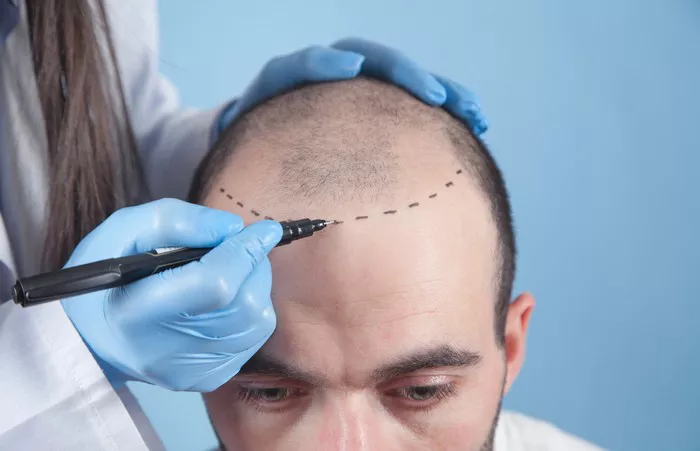Undergoing a hair transplant surgery is a life-changing decision for many people struggling with hair loss. After the procedure, the journey doesn’t end—it transitions into a crucial phase of recovery and maintenance. Proper care for your transplanted hair is essential to ensure long-term success, healthy growth, and natural-looking results. In this comprehensive guide, we explore seven practical and effective ways to take care of transplanted hair, helping you achieve the best possible outcome from your investment.
1. Follow Post-Surgery Instructions Diligently
Immediately after your hair transplant, your surgeon will provide a list of post-operative care instructions. These are not optional; they are tailored to reduce complications and encourage optimal healing. Common guidelines include keeping the scalp dry for the first 48 hours, avoiding direct sunlight, and sleeping in an elevated position to minimize swelling. Ignoring these instructions can lead to poor graft survival and prolonged recovery.
Medication and Pain Management
You may be prescribed antibiotics or anti-inflammatory medications. Ensure you complete the course as directed. Painkillers can be taken as needed, but avoid any that were not specifically recommended by your doctor.
2. Gentle Hair Washing Routine
One of the most common concerns patients have is when and how to wash their hair after a transplant. Typically, gentle washing is permitted 3-4 days post-surgery. Use a mild, sulfate-free shampoo and lukewarm water. Do not pour water directly onto your scalp from a showerhead. Instead, use a cup or your hand to gently rinse the scalp.
Avoid Rubbing or Scratching
Rubbing or scratching the scalp can dislodge the grafts. Pat the area dry with a soft towel and avoid hair dryers until your doctor gives the go-ahead.
3. Be Mindful of Physical Activity
For at least two weeks post-surgery, you should avoid strenuous physical activities, including weightlifting, running, and even yoga. These activities can increase blood flow to the scalp and potentially dislodge the grafts or increase swelling.
When to Resume Workouts
Light activities such as walking can usually resume after a week. Consult your surgeon before returning to any intense workout routine.
4. Protect Your Scalp from Sun Exposure
The scalp becomes particularly sensitive after a transplant. Direct exposure to the sun can damage the healing skin and even affect graft survival. Use a loose-fitting hat if you need to go outdoors during the day, especially in the first month post-procedure.
Use Sunscreen with Caution
While sunscreen can help, it’s generally not recommended to apply any product directly to the scalp until it has fully healed. Ask your doctor before using sunscreen on the treated area.
5. Nutrition and Hydration
Your hair’s health is directly linked to your overall nutrition. After a transplant, your body needs nutrients to heal and support new hair growth. A balanced diet rich in protein, vitamins (especially Biotin and Vitamin E), and minerals like zinc can accelerate healing and enhance hair quality.
Foods to Include
Incorporate eggs, nuts, leafy greens, lean meats, and fruits into your diet. Drink plenty of water to stay hydrated, which also aids in skin recovery.
6. Monitor the Recovery Process
Every patient experiences a different pace of healing. Monitoring your hair transplant recovery allows you to identify any potential complications early, such as infections, cysts, or excessive redness. Regular follow-up appointments with your surgeon are crucial for assessing graft health and ensuring everything is progressing normally.
What’s Normal and What’s Not
Shedding of transplanted hair within the first few weeks is entirely normal—this phase is called “shock loss.” However, if you experience intense pain, oozing, or fever, contact your clinic immediately.
7. Be Patient and Avoid Touching the Area
Hair restoration is a slow process. It can take 9 to 12 months to see significant growth. Patience is key. Avoid constantly touching or inspecting your scalp, as this can introduce bacteria or disturb the grafts. Trust the process and maintain regular consultations with your doctor for guidance.
Tracking Progress
Many patients find it helpful to take monthly photos to track growth and changes. This can be motivating and provide a clear view of the transformation. For visual references, looking at hair transplant before and after images can help set realistic expectations.
Conclusion
Getting a hair transplant is just the beginning of your hair restoration journey. Proper post-operative care is critical to the long-term success of your procedure. By following these seven key practices—adhering to post-op instructions, practicing gentle washing, avoiding physical strain, protecting the scalp from sun, eating a nutritious diet, monitoring the healing process, and staying patient—you greatly enhance your chances of achieving natural, healthy hair growth. Commit to these habits, and you’ll be rewarded not just with visible results but with renewed confidence and self-esteem.
Related Topics:
- Wes Welker Undergoes Hair Restoration Procedure
- Kanpur Hair Transplant Deaths: Clinic Raided, Equipment Seized
- Beard Transplants: 6 Things You Need to Know Before Booking


